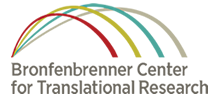There is a lot to be said in favor of using evidence-based programs. They have been rigorously tested, and for that reason we can be pretty sure they will have the effects we want them to have. But often an agency or community educator will find an evidence-based program, try it out, and then want to tweak it in one way or the other. It may seem like it doesn’t quite fit your audience, or you might feel like replacing one component with something else, or skipping part of the program.
If you do that, is the program still “evidence-based?” How much can you change a program without making it less effective? The term scientists use is “fidelity” – that is, the faithfulness with which a practitioner implements a program. If you are engaging in fidelity to the program, you are implementing it pretty much as it is written, without changing its core components.
What some people do, however, is adaptation – making changes in the program to make it fit your clientele or the organization you work in. This isn’t necessarily a bad thing, and it might be necessary to fit a program into a given time frame, to accommodate people of different cultures or with different languages, or even just to have more “ownership” of the curriculum. However, if the program is changed too much, it can reduce the strength of the program. (The University of Wisconsin Extension has a helpful fact sheet that differentiates between “acceptable” and “risky” adaptation of programs.)
A recent talk given at Cornell addresses these issues in a very interesting and informative way. The wonderful Cornell Human Development Multimedia Website offers a video of Lori Rollen presenting on “Making Informed Adaptations to Evidence-based Sex and HIV Education Programs.”
(While you are there, take a look at the dozens of other videos with speakers discussing their research. It is an amazing site. I take the occasional lunch at my desk and use this site to catch up on what’s new in the world of research on human development.)
Lori helps you think out when adaptation of a program is a good idea and when it isn’t. She uses a clear “green light, yellow light, red light” system to show when it’s okay to adapt, when you should be cautious, and when it’s best to leave the program just as it is. And the programs she reviews on sex and HIV education are interesting in and of themselves.
Have you had any experience in adapting programs? We’re interested to hear from you.



Evidence-based practice (EBP) is a way of approaching decision making about clinical issues. It is more than just the EBP process – it is a worldview. The decision must be made with the best knowledge possible from science and from practice (for example, quality improvement or core measures data) as it is interpreted by a clinician (with that person’s expertise, experience, life knowledge and intuition completely integrated into the interpretation) who fully collaborates with the patient, valuing what he/she wants as the outcome for this decision and why. Patient preferences, as they are called, sometimes change when clinicians explain the science as interpreted through their expertise – we call these informed patient preferences. This enables the best outcome to be achieved for that patient.
Another aspect of EBP is the process for sustainable change to best practice – it is involves 7 steps:
0. Cultivate a spirit of inquiry.
1. Ask the burning clinical question in PICOT format.
2. Search for and collect the most relevant best evidence.
3. Critically appraise the evidence (i.e., rapid critical appraisal, evaluation & synthesis).
4. Integrate the best evidence with one’s clinical expertise and patient preferences and values in making a practice decision or change.
5. Evaluate outcomes of the practice decision or change based on evidence.
6. Disseminate the outcomes of the evidence-based practice decision or change.
From: Melnyk, B.M., & Fineout-Overholt, E. (2011). Evidence-based Practice in Nursing & Healthcare. A Guide to Best Practice (2nd edition). Philadelphia: Lippincott, Williams & Wilkins.
For more information, consult the book above and the AJN EBP Step-by-Step Series:
http://journals.lww.com/ajnonline/pages/collectiondetails.aspx?TopicalCollectionId=10
Best wishes as you continue your EBP journey!
The CAEP Team
http://nursingandhealth.asu.edu/evidence-based-practice/index.htm
Source:
From: Melnyk, B.M., & Fineout-Overholt, E. (2011). Evidence-based Practice in Nursing & Healthcare. A Guide to Best Practice (2nd edition). Philadelphia: Lippincott, Williams & Wilkins.
http://journals.lww.com/ajnonline/pages/collectiondetails.aspx?TopicalCollectionId=10
http://nursingandhealth.asu.edu/evidence-based-practice/index.htm
Is there legislation for how much you are allowed to tweak a program to still deem it as evidence-based. Generally my thinking is that if you mess with the system, it often doesn’t work the way it’s supposed to. And especially in terms of specific research, any deviations shouldn’t really be evidence-based anymore. Otherwise one would have a hard time differentiating from minor and major deviations.